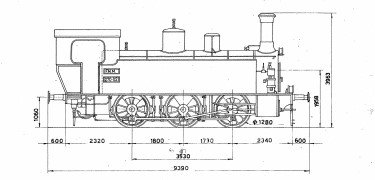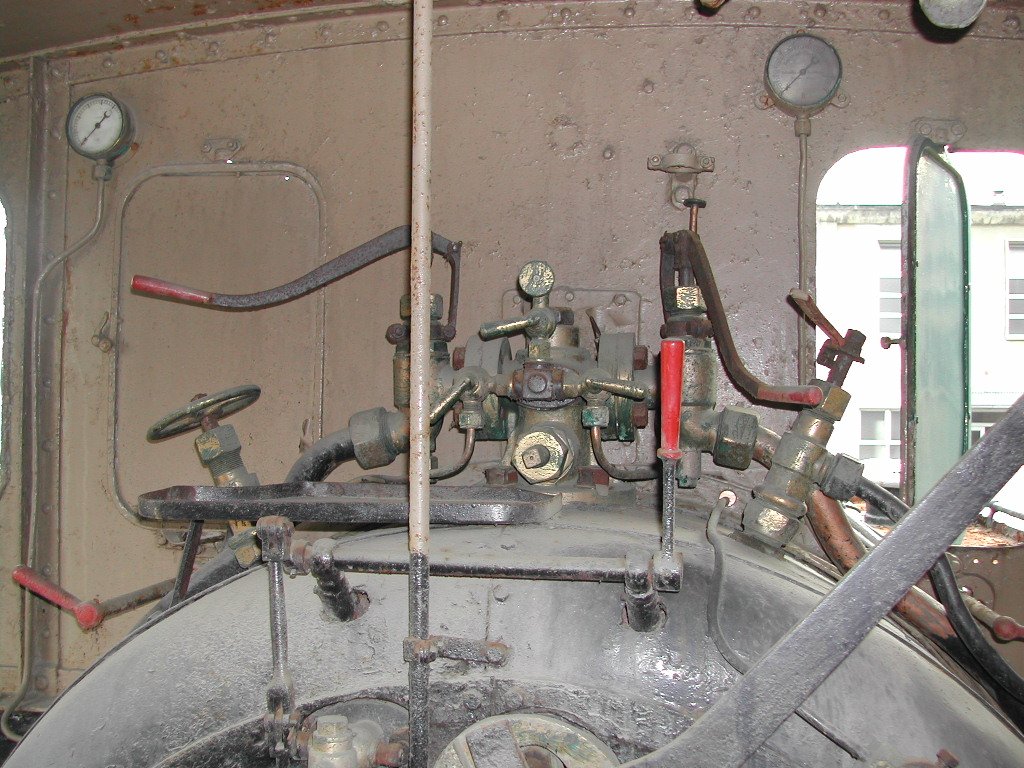A class of locomotive originally developed for the S.A. Ferrovia Novara-Seregno. The first two locomotives were built for this company by Maschinenfabrik in Esslingen, near Stuttgart, in 1888. They were saturated steam locomotives with two external cylinders and an internal Allan valve gear. Ferrovie Nord took over operation of the Novara-Saronno-Seregno line in 1894, acquiring with it the rolling stock in service. The impressive performance of the two locomotives, with both passenger and goods trains, convinced Ferrovie Nord to have another two built in 1897 by the Italian branch of Maschinenfabrik, the Costruzioni Meccaniche Saronno. A third batch of locomotives was acquired in 1902, also supplied by Maschinenfabrik. The class reached the size of 7 units, numbered from 71 to 77, later renumbered as class 270-01 - 07. The 270-04 still exists today. Placed at the entrance to the Novara locomotive depot in the summer of 1985, it was brought back inside for restoration in April 2021.
Class 270


- Progettazione: 1888
- Costruzione: 1888-1902
- Esercizio: 1888-1971 (presente)
- Massa a vuoto: 33,5 t.
- Massa a pieno carico: 44 t.
- Costruttore: Maschinenfabrik
- Lunghezza fuori tutto: 9.390 mm
- Passo rigido: 3.530 mm
- Ruote Ø: 1.280 mm
- Velocita massima: 60 Km/h
- Altezza fumaiolo: 3.963 mm
- Capacità cassa carbone: 1.100 kg
- Capacità casse acqua: 5,40 m³
- Freno: Continuo
- Illuminazione: elettrica
- Design date: 1888
- Build date: 1888-1902
- Service date: 1888-1971 (present)
- Tare weight: 33.5 tons
- Gross weight: 44 tons
- Costruttore: Maschinenfabrik
- Overall length: 9,390 mm
- Rigid wheelbase: 3,530 mm
- Wheel Ø: 1,280 mm
- Maximum speed: 60 Km/h
- Funnel height: 3,963 mm
- Coal bunker capacity: 1,100 kg
- Water tank capacity: 5.40 m³
- Braking system: Continuous
- Lighting: electric
- Design date: 1888
- Build date: 1888-1902
- Service date: 1888-1971 (present)
- Tare weight: 33.5 tons
- Gross weight: 44 tons
- Builder: Maschinenfabrik
- Overall length: 9,390 mm
- Rigid wheelbase: 3,530 mm
- Wheel Ø: 1,280 mm
- Maximum speed: 60 Km/h
- Funnel height: 3,963 mm
- Coal bunker capacity: 1,100 kg
- Water tank capacity: 5.40 m³
- Freno: Continuo
- Lighting: electric
The class 270 locomotives were tank engines, meaning that they were equipped with coal bunkers and water tanks on the locomotive itself. Inside the driving cab, which was much more enclosed and protected than those in previous eras, there is a large coal bunker located at the rear; the water compartments, two tanks for storing the water, are located at the sides of the boiler. As the boiler consumed the water it contained, transforming it into steam, more water was introduced into the boiler by the firemen, via injector valves controlled from the cab, drawing it from the tanks. The locomotives used on the FNM network were all of the tank engine type. This was to save space for turning at small terminus stations. In addition, the distance covered by the trains was in the range of a few dozen kilometres, which eliminated the need for a separate tender for coal and water, as was present on many FS locomotives.


